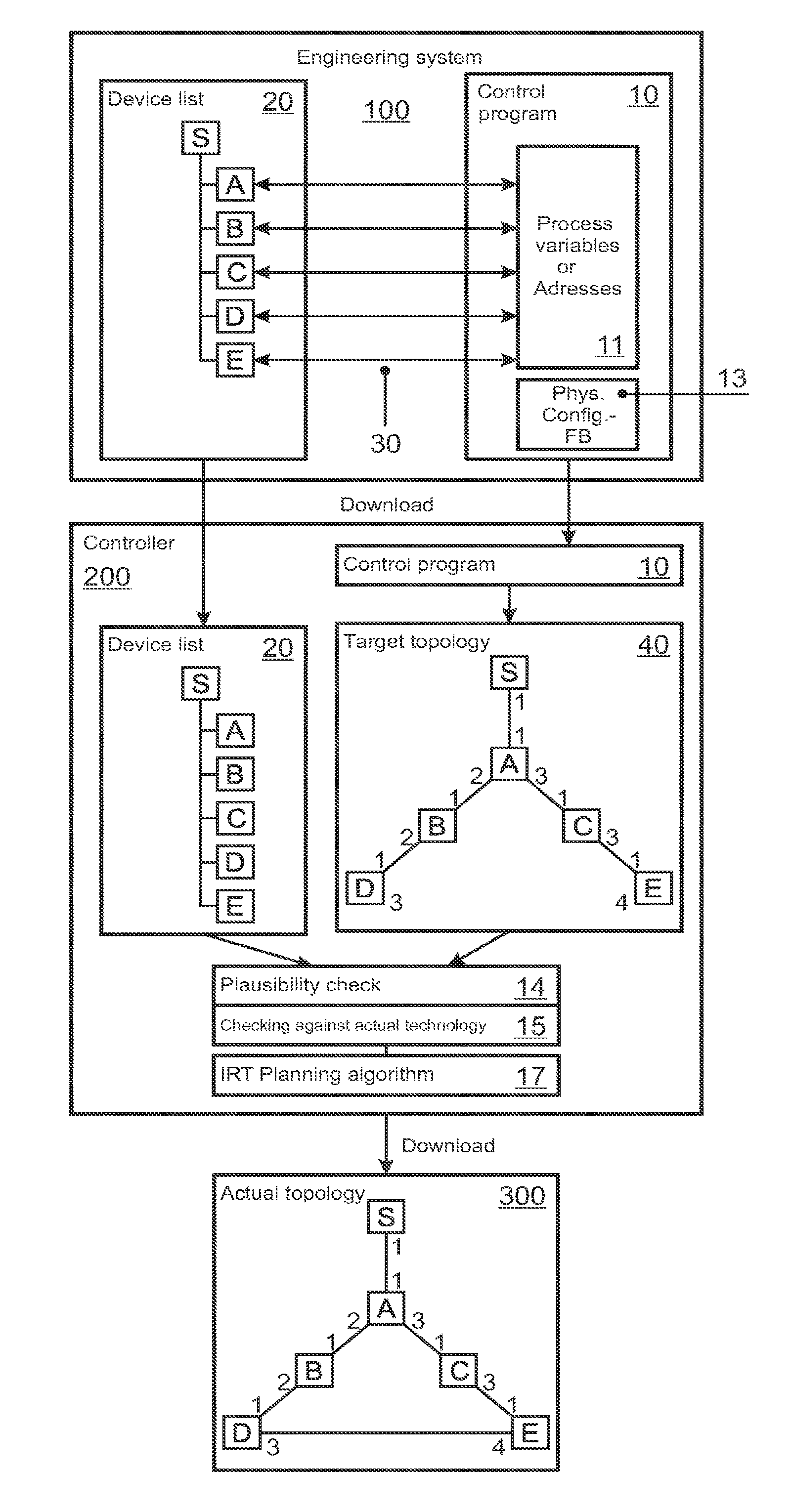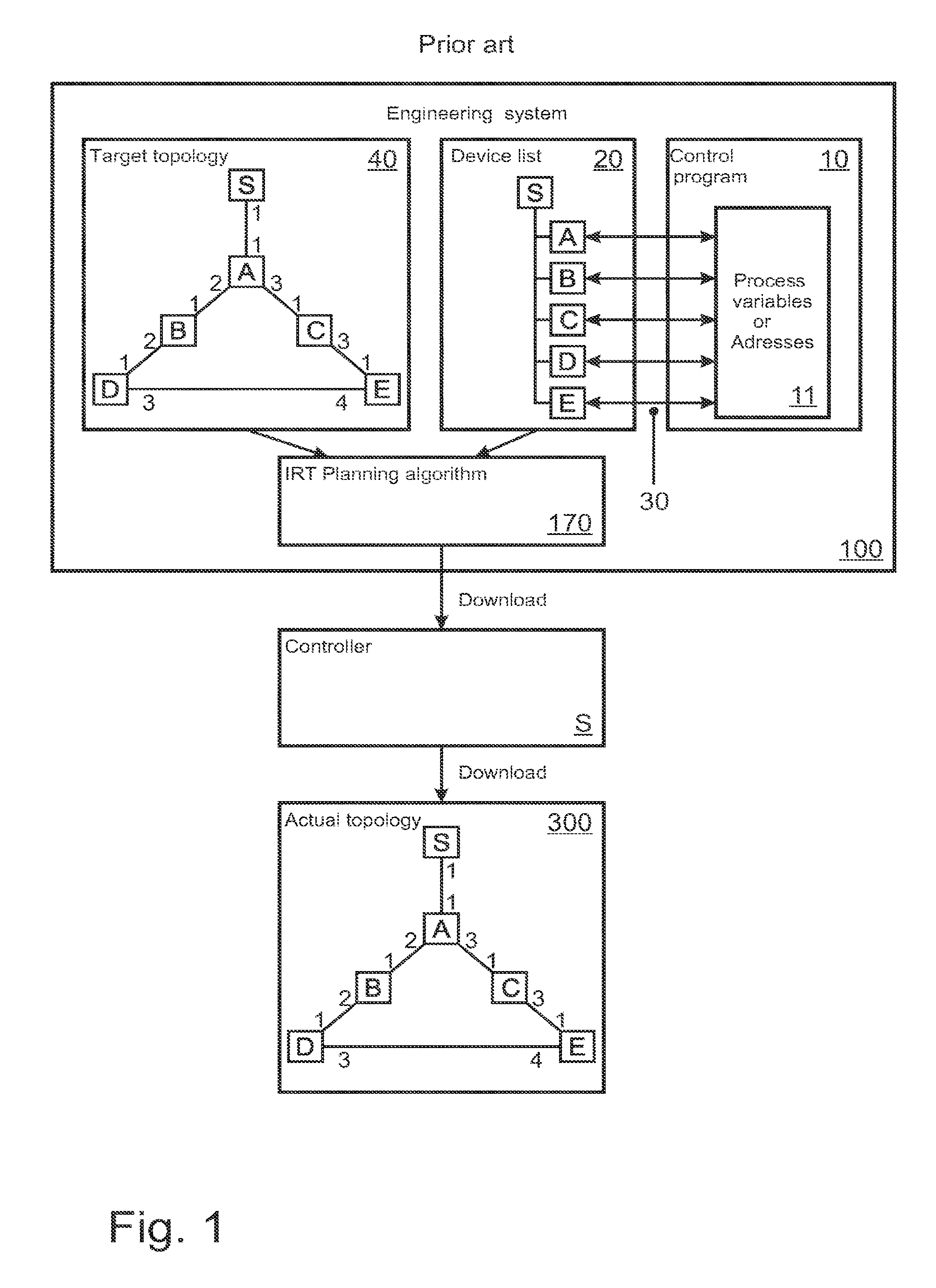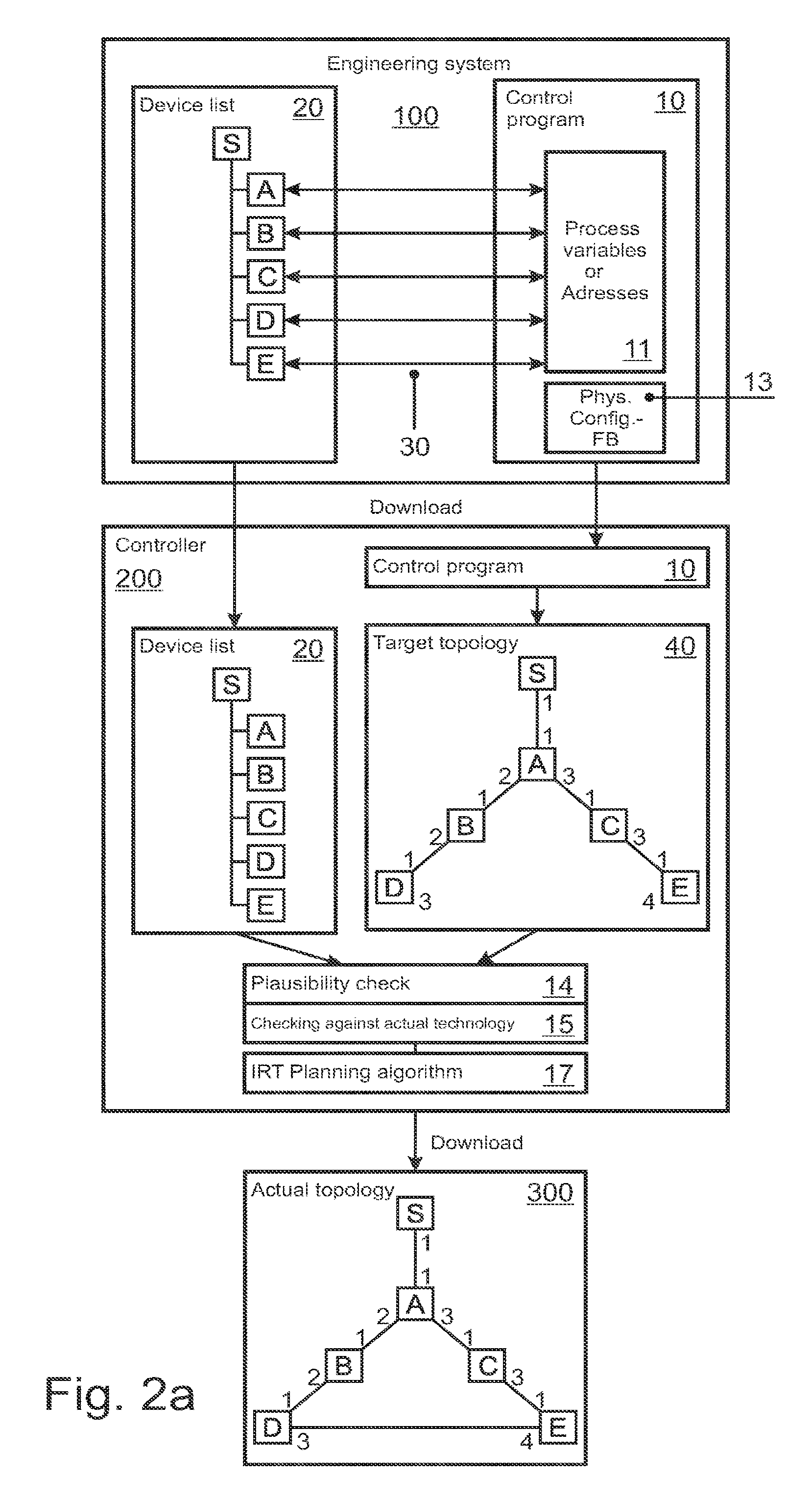Port-independent topologically planned real-time network
a topological planning and port-independent technology, applied in the field of port-independent topological planning real-time networks, can solve the problems of abandoning a target topology, safety risk, and no longer practicable in advance to provide the necessary configuration
- Summary
- Abstract
- Description
- Claims
- Application Information
AI Technical Summary
Benefits of technology
Problems solved by technology
Method used
Image
Examples
Embodiment Construction
[0072]FIG. 1 shows a schematic illustration of a solution known from the prior art for configuring subscribers of a network as they have already been substantially described above.
[0073]For the logical and physical configuration of the devices A, B, C, D and E and the controller S which belong to a certain variant of an industrial plant, which is not shown in detail in FIG. 1, and which are at the same time subscribers of a network via which they are connected according to an actual topology 300 and shall be able to transmit or exchange data between each other, the solution represented according to FIG. 1 and already known from the prior art always requires an engineering system 100 which usually is formed by an engineering tool implemented on a data processing unit, usually on a PC or a workstation.
[0074]The actual topology 300 is arranged such that initially the control S is connected via its network interface 1 to the network interface 1 of the device A. Besides the network inter...
PUM
 Login to View More
Login to View More Abstract
Description
Claims
Application Information
 Login to View More
Login to View More - R&D
- Intellectual Property
- Life Sciences
- Materials
- Tech Scout
- Unparalleled Data Quality
- Higher Quality Content
- 60% Fewer Hallucinations
Browse by: Latest US Patents, China's latest patents, Technical Efficacy Thesaurus, Application Domain, Technology Topic, Popular Technical Reports.
© 2025 PatSnap. All rights reserved.Legal|Privacy policy|Modern Slavery Act Transparency Statement|Sitemap|About US| Contact US: help@patsnap.com



